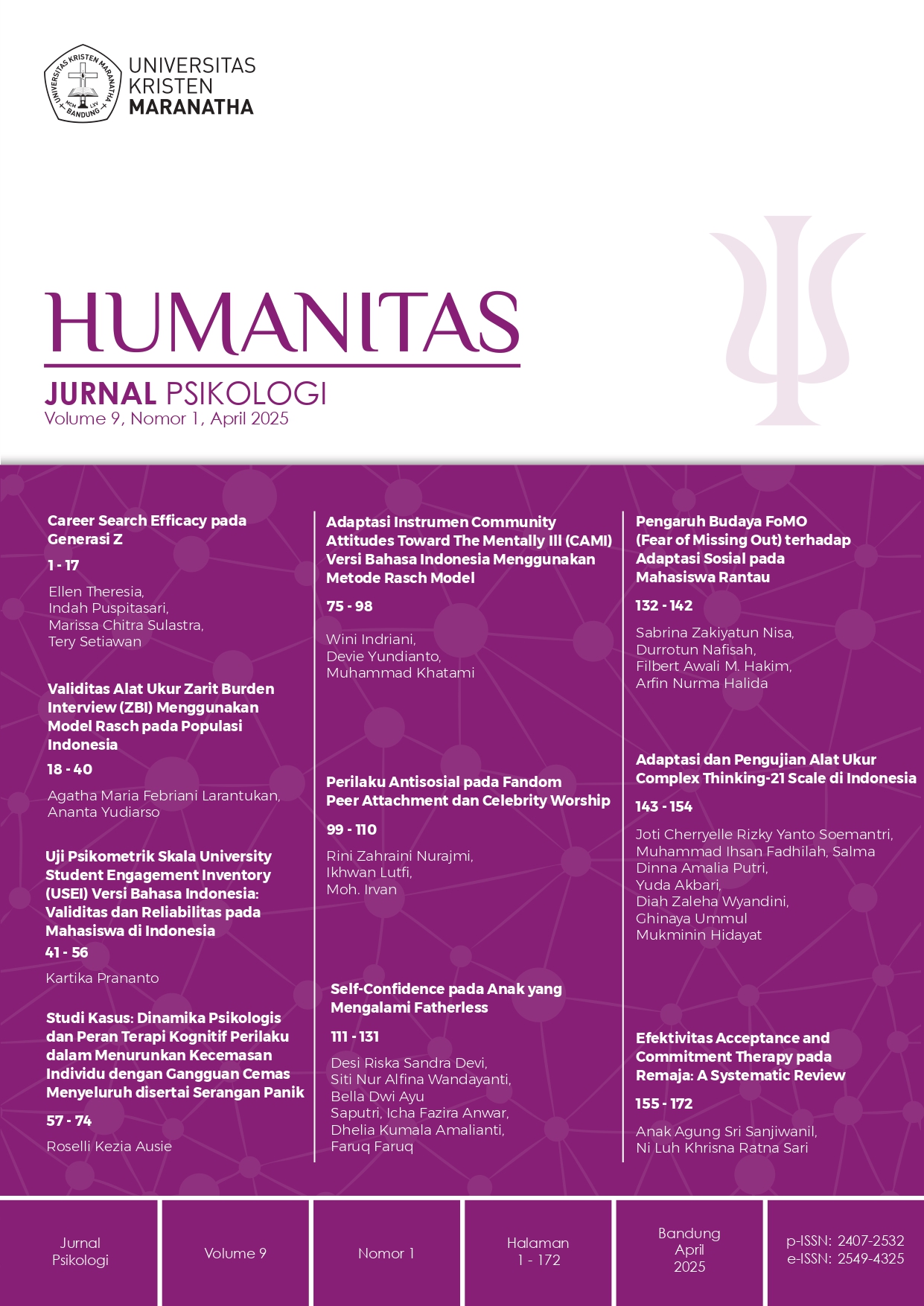Psychometric Test of the University Student Engagement Inventory (USEI) Scale in Indonesian Version: Validity and Reliability in Students in Indonesia
Main Article Content
Abstract
Downloads
Article Details

This work is licensed under a Creative Commons Attribution-NonCommercial 4.0 International License.
References
Adams, R. J. (2005). Reliability as a measurement of design effect. Studies in Educational Evaluation, 31(2- 3), 162-172. https://doi.org/10.1016/j.stueduc.2005.05.008.
Adams, R. J., & Khoo, S. T. (1993). Quest: the interactive test analysis system. Australian Council for Educational Research.
Appleton, J. J., Christenson, S. L., and Furlong, M. J. (2008). Student engagement with school: critical conceptual and methodological issues of the construct. Psychol. Sch. 45, 369–386. doi: 10.1002/pits.20303
Azwar, S. (2012). Penyusunan skala psikologi edisi 2.Yogyakarta. Pustaka Pelajar
Brown, T. A. (2015). Confirmatory Factor Analysis for Applied Research. New York, NY: Guilford Press.
Crocker, Linda, and James Algina. Introduction to Classical and Modern Test Theory. Rinchart and Winston: Inc. Amerika, 1986
Dancey, C. P., & Reidy, J. (2011). Statistics without Maths for Psychology (5th ed., pp. 461-472). Pearson Education Limited.
Fredricks J, McColskey W. The measurement of student engagement: a comparative analysis of various methods and student self-report instruments. In: Christenson SL, Reschly AL, Wylie C, editors. Handbook of research on student engagement. US: Springer; 2012. p. 763–82.
Fredricks JA, Blumenfeld P, Friedel J, Paris A. School engagement. In: Moore KA, Lippman LH, editors. What do children need to flourish: conceptualizing and measuring indicators of positive development. New York: Springer Science + Business Media; 2004. p. 305–21.
Ghozali, I. (2017). Structural equations model concepts and application with Amos 24 program. Semarang: Agency Publisher UNDIP.
Hair, J. F., Anderson, R. E., Babin, B. J., & Black, W. C. (2010). Multivariate data analysis: A global perspective (Vol. 7): Upper Saddle River, NJ: Pearson.
International Test Commission. (2017). The ITC guidelines for translating and adapting tests (Second edition). International Journal of Testing, 18(2), 101-134. doi:10.1080/15305058.2017.1398166
Maroco, J., Maroco, A. L., Bonini Campos, J. A. D., and Fredricks, J. A. (2016). University student’s engagement: Development of the University Student Engagement Inventory (USEI). Psicol. Reflex. e Crit. 29:21. doi: 10.1186/s41155-016-0042-8
Maroco, J., Maroco, A. L., and Campos, J. A. D. B. (2014). Student’s Academic efficacy or inefficacy? an example on how to evaluate the psychometric properties of a measuring instrument and evaluate the effects of item wording. Open J. Stat. 04, 484–493. doi: 10.4236/ojs.2014.46046
Sugiyono. (2010). Metode penelitian pendidikan pendekatan kuantitatif, kualitatif, dan R dan D. Bandung: Alfabeta.

